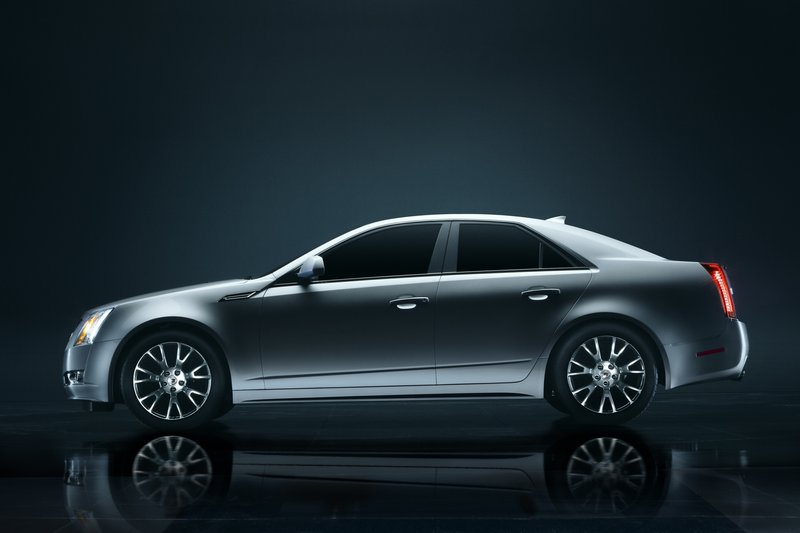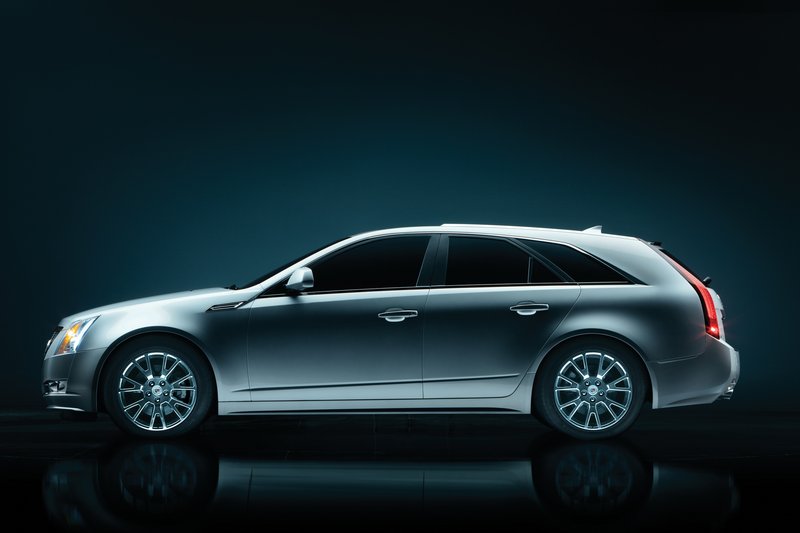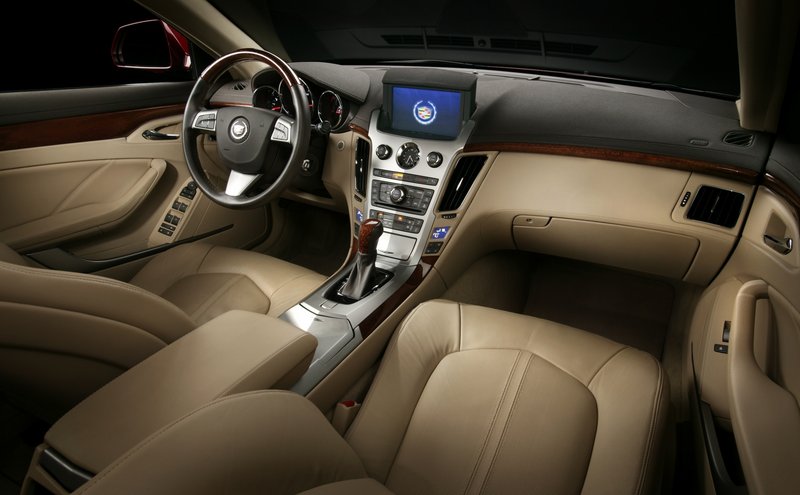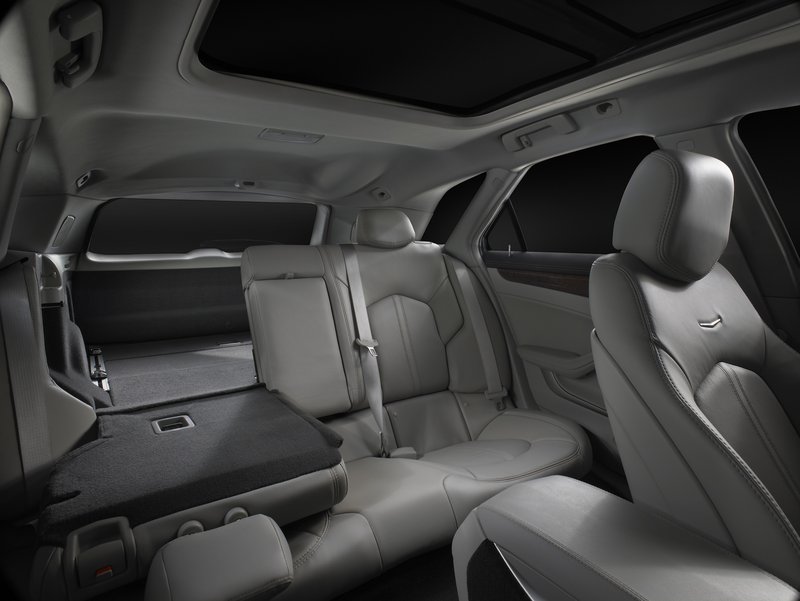This is not your father’s station wagon.
That was as obvious as a Great Dane at a Chihuahua convention from the moment I saw Cadillac’s CTS Sport Wagon. Visually, the CTS Wagon has as much in common with a Ford Country Squire or Buick Roadmaster Estate as Danny Devito does with Shaquille O’Neal.
Those bloated land cruisers of my childhood were generally distorted versions of the sedans on which they were based. They looked as if they were designed by using Silly Putty to copy and then stretch the sedan just beyond recognition.
In short, they were typically as ugly as they were practical. No wonder they were rendered nearly extinct by SUVs, which buyers considered more macho, robust and sexy than conventional station wagons.
Yet there is no denying the practicality of station wagons. That’s one reason they remain popular in Europe, where higher fuel prices and narrower roads thwarted the sales boom of big, brawny, gas-swilling SUVs that lasted more than a decade in the U.S.
Spending a couple of weeks driving Cadillac’s CTS Sport Wagon and its Sedan counterpart reminded me why I’ve always appreciated station wagons. The two vehicles were equipped almost identically, so the only substantial difference between them was body style and styling.
The CTS Sport Sedan and Sport Wagon (there’s also a CTS Coupe, which I didn’t test) have so much in common that it’s easier to list disparities. According to Cadillac specs, the sedan is a whisker (less than a half-inch) longer than a similarly equipped wagon, weighs 200 pounds less, and — according to their window stickers — travels one highway mile farther on a gallon of gas when equipped with the 3.6-liter engine.
That is one of two engines available on the CTS. The base engine is a 3.0-liter V6 rated at 270 horsepower and 223 pounds-feet of torque. The upgrade, found in both test vehicles, is a 3.6-liter V6 that Cadillac says will deliver 304 horsepower and 273 pounds-feet of torque.
The Sport Sedan is available with a six-speed manual transmission or six-speed automatic. The Sport Wagon gets only the automatic. Both test cars came with the automatic, which changes gears fluidly and downshifts quickly when the gas pedal is prodded.
Prodding the pedal produces a rewarding response from either CTS model. Both live up to their “Sport” monikers, with plenty of zip around town and ample highway passing power for even my impatient ways.
While both body styles deliver plenty of thrust, my stopwatch suggests that the sedan does so with a bit more zeal than the wagon. I clocked zero to 60 mph in 5.9 seconds for the Sport Sedan and 6.8 seconds for the Sport Wagon.
Since the test vehicles were equipped with the same powertrains, I suspect the difference in acceleration is a case of the Sport Wagon’s heavier curb weight.
Despite the weight difference, both vehicles ride and handle comparably, which is to say very well.
Cadillac opted for a rear-wheel drive platform when it redesigned the CTS for 2008 because it is thought to provide the best driving experience. The company also spent development time tuning the CTS’ chassis at Germany’s famous Nurburgring racetrack.
The planning paid off. Both CTS models tracked effortlessly on the highway while cornering with confidence and predictability. Body lean is negligible even when pushing hard in a tight turn. The CTS is unflustered when its line is changed suddenly, an easy task thanks to its nicely weighted and responsive rack-and-pinion steering.
At least that was the case with the two test vehicles, both of which were equipped with rear-wheel drive and Cadillac’s optional “Summer Tire Performance” package (a $2,090 option). The package includes beefier brakes, a sport-tuned suspension and larger, summer-only, tires and wheels.
Given that, I’m glad I tested the CTS models before our first snowstorm hit. The CTS is available with AWD for those of us living in the snow belt.
Like its high-end European competitors, the CTS’ excellent handling doesn’t come at the expense of comfort. Its ride is firm but calm; small bumps and ruts are noticeable but never obtrusive, and large ones are soaked up by the suspension.
The interior is quiet, too, as one would expect in a premium automobile.
What you might not expect if you haven’t seen the inside of a Cadillac or GM product lately, is the level of refinement delivered by the cabin accommodations. The CTS’ interior is characterized by stylish design, luxurious materials (look and feel), and impeccable assembly of all the components.
The CTS Sport Sedan and Sport Wagon have nearly identical interiors, including the front- and rear-seat passenger accommodations.
The only real disparity is due to their body styles. Like most wagons, the CTS version features an open cargo area that can be expanded by folding the split rear seatbacks and accessed through a tailgate. The Sport Sedan has a conventional trunk with a pass-through behind its rear-seat armrest.
Cadillac says the sedan’s trunk measures 13.6 cubic feet. The Sport Wagon, on the other hand, has 25 cubic feet of cargo space behind its rear seatbacks and a maximum capacity of 53.4 cubic feet with the seatbacks folded.
In short, the Sport Wagon has much more cargo carrying capacity and versatility than the Sport Sedan. When station wagons resembled Oscar Mayers’ Wienermobile, a lot of folks would rather rent a U-Haul than buy a wagon.
But unless you’re looking to save a few bucks or get from zero to 60 a bit quicker, the CTS Sport Wagon looks like a dazzlingly appealing alternative to its Sport Sedan counterpart.
Scott Wasser is executive editor of MaineToday Media. He writes a weekly auto column for the Sunday Telegram and other newspapers. He can be reached at
swasser@pressherald.com.
Send questions/comments to the editors.






Comments are no longer available on this story